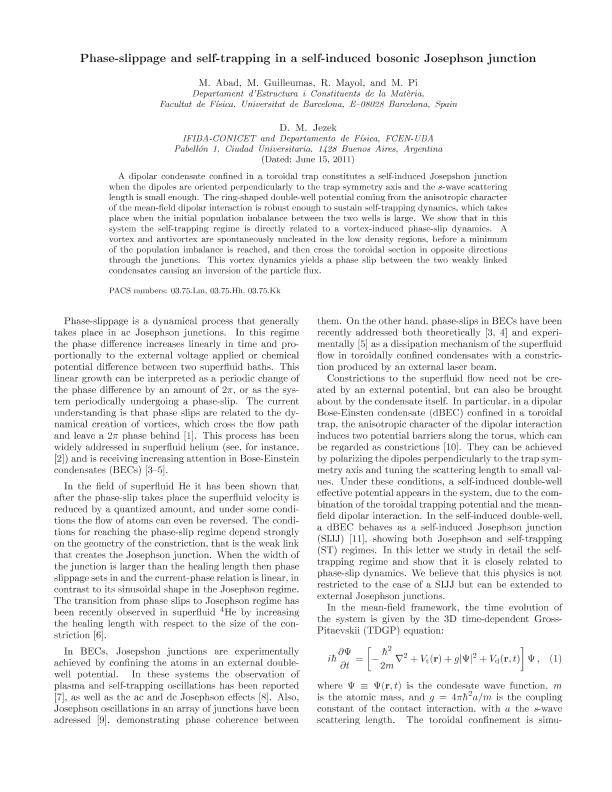Artículo
Phase slippage and self-trapping in a self-induced bosonic Josephson junction
Fecha de publicación:
09/2011
Editorial:
American Physical Society
Revista:
Physical Review A: Atomic, Molecular and Optical Physics
ISSN:
1050-2947
Idioma:
Inglés
Tipo de recurso:
Artículo publicado
Clasificación temática:
Resumen
A dipolar condensate confined in a toroidal trap constitutes a self-induced Josephson junction when the dipoles are oriented perpendicularly to the trap symmetry axis and the s-wave scattering length is small enough. The ring-shaped double-well potential coming from the anisotropic character of the mean-field dipolar interaction is robust enough to sustain self-trapping dynamics, which takes place when the initial population imbalance between the two wells is large. We show that, in this system, the self-trapping regime is directly related to a vortex-induced phase-slip dynamics. A vortex and antivortex are spontaneously nucleated in the low-density regions before a minimum of the population imbalance is reached and then cross the toroidal section in opposite directions through the junctions. This vortex dynamics yields a phase slip between the two weakly linked condensates causing an inversion of the particle flux. © 2011 American Physical Society.
Palabras clave:
Dipolar Condensate
,
Self-Trapping
,
Vortex
,
Toroidal Trap
Archivos asociados
Licencia
Identificadores
Colecciones
Articulos(IFIBA)
Articulos de INST.DE FISICA DE BUENOS AIRES
Articulos de INST.DE FISICA DE BUENOS AIRES
Citación
Abad, Manuel; Guilleumas, M.; Mayol, R.; Pi, M.; Jezek, Dora Marta; Phase slippage and self-trapping in a self-induced bosonic Josephson junction; American Physical Society; Physical Review A: Atomic, Molecular and Optical Physics; 84; 3; 9-2011; 356011-356014
Compartir
Altmétricas




